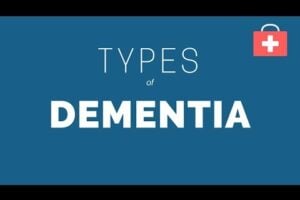3 ROOTS OF ALZHEIMER’S:
Columbia University researchers have pinpointed 3 discoveries about Alzheimer’s:
- Where it starts
- Why it starts there
- How it spreads.
Learn why this can help researchers treat Alzheimer’s sooner and better.
Using high-resolution functional MRI (fMRI) imaging in patients with Alzheimer’s disease and in mouse models of the disease, Columbia University Medical Center (CUMC) researchers have clarified three fundamental issues about Alzheimer’s: where it starts, why it starts there, and how it spreads. In addition to advancing understanding of Alzheimer’s, the findings could improve early detection of the disease, when drugs may be most effective. The study was published today in the online edition of the journalNature Neuroscience.
Alzheimer’s disease starts in the entorhinal cortex (yellow). Using fMRI in mouse (left) and human (right) brains, the researchers provide evidence that the disease spreads from the entohrinal cortex (yellow) to other cortical regions (red) — the perirhinal cortex and posterior parietal cortex. (Credit: Usman Khan/lab of Scott A. Small, MD, Columbia University Medical Center.)
“It has been known for years that Alzheimer’s starts in a brain region known as the entorhinal cortex,” said co-senior author Scott A. Small, MD, Boris and Rose Katz Professor of Neurology, professor of radiology, and director of the Alzheimer’s Disease Research Center. “But this study is the first to show in living patients that it begins specifically in the lateral entorhinal cortex, or LEC. The LEC is considered to be a gateway to the hippocampus, which plays a key role in the consolidation of long-term memory, among other functions. If the LEC is affected, other aspects of the hippocampus will also be affected.”
The study also shows that, over time, Alzheimer’s spreads from the LEC directly to other areas of the cerebral cortex, in particular, the parietal cortex, a brain region involved in various functions, including spatial orientation and navigation. The researchers suspect that Alzheimer’s spreads “functionally,” that is, by compromising the function of neurons in the LEC, which then compromises the integrity of neurons in adjoining areas.
A third major finding of the study is that LEC dysfunction occurs when changes in tau and amyloid precursor protein (APP) co-exist. “The LEC is especially vulnerable to Alzheimer’s because it normally accumulates tau, which sensitizes the LEC to the accumulation of APP. Together, these two proteins damage neurons in the LEC, setting the stage for Alzheimer’s,” said co-senior author Karen E. Duff, PhD, professor of pathology and cell biology (in psychiatry and in the Taub Institute for Research on Alzheimer’s Disease and the Aging Brain) at CUMC and at the New York State Psychiatric Institute.
In the study, the researchers used a high-resolution variant of fMRI to map metabolic defects in the brains of 96 adults enrolled in the Washington Heights-Inwood Columbia Aging Project (WHICAP). All of the adults were free of dementia at the time of enrollment.
“Dr. Richard Mayeux’s WHICAP study enables us to follow a large group of healthy elderly individuals, some of whom have gone on to develop Alzheimer’s disease,” said Dr. Small. “This study has given us a unique opportunity to image and characterize patients with Alzheimer’s in its earliest, preclinical stage.”
The 96 adults were followed for an average of 3.5 years, at which time 12 individuals were found to have progressed to mild Alzheimer’s disease. An analysis of the baseline fMRI images of those 12 individuals found significant decreases in cerebral blood volume (CBV) — a measure of metabolic activity — in the LEC compared with that of the 84 adults who were free of dementia.
A second part of the study addressed the role of tau and APP in LEC dysfunction. While previous studies have suggested that entorhinal cortex dysfunction is associated with both tau and APP abnormalities, it was not known how these proteins interact to drive this dysfunction, particularly in preclinical Alzheimer’s.
To answer this question, explained first author Usman Khan, an MD-PhD student based in Dr. Small’s lab, the team created three mouse models, one with elevated levels of tau in the LEC, one with elevated levels of APP, and one with elevated levels of both proteins. The researchers found that the LEC dysfunction occurred only in the mice with both tau and APP.
The study has implications for both research and treatment. “Now that we’ve pinpointed where Alzheimer’s starts, and shown that those changes are observable using fMRI, we may be able to detect Alzheimer’s at its earliest preclinical stage, when the disease might be more treatable and before it spreads to other brain regions,” said Dr. Small. In addition, say the researchers, the new imaging method could be used to assess the efficacy of promising Alzheimer’s drugs during the disease’s early stages.
The study was supported by grants from National Institutes of Health (AG034618, AG025161, AG07232, AG037212, NS074874, and HL094423.
Source:
Columbia University Medical Center, via Newswise.
Journal Reference:
- Usman A Khan, Li Liu, Frank A Provenzano, Diego E Berman, Caterina P Profaci, Richard Sloan, Richard Mayeux, Karen E Duff, Scott A Small. Molecular drivers and cortical spread of lateral entorhinal cortex dysfunction in preclinical Alzheimer’s disease. Nature Neuroscience, 2013; DOI: 10.1038/nn.3606













The most common and apparent symptom of Alzheimers is eventual or gradual memory loss. The sufferer may try to hide this by making excuses, but with the passage of time, this will become more profound and substantial.But don't need to hide you can easily get relief from this disease by using some simple Ayurvedic Remedies for Alzheimer.
It won't be too long to find a cure way for Alzheimer. Besides with the progress mentioned in the post, there are other great advancements, for example, the development situation can be reported with the PET scan.
They have been trying for about 110 years
According the article bellow , ACETYL-L-CARNITINE looks to has SYNERGISTIC EFFECTS with medium-chain triglycerides (fatty acids) as the EXTRA VIRGIN COCONUT OIL, etc.INCREASING THE BRAIN ENERGY AND THE ENERGY TO THE WHOLE BODY.
But only in very small doses of both supplements,and only under physician prescription and supervision.
Article: "Carnitine supplementation and ketogenesis by small-for-date neonates on medium-and long-chain fatty acid formulae",in the Journal Biology of Neonate,2000,authors Labadaridis J. :"Carnitine is a key molecule in energy production from various substrates.Increased ketogenesis was shown by the neonates receiving medium-chain triglycerides (as extras virgin coconut oil) and carnitine."
An option to patients that have diarrhea with the ingestiony,of coconut oil,can be the massages in the thin skin of the arms and/or legs of Elders,with extra virgin coconut oil,as a source of ketones.As we can see bellow, extra virgin coconut oil has a proved great trans-cutaneous absortion in thin skins.
1) Article : "TRANSCUTANEOUS ABSORTION OF TOPICALLY MASSAGED OIL IN NEONATES "(TKirti Solanki and colleagues,University of Pune,India ,in the Journal Indian Pediatrics 2005,we can read : "Coconut Oil (rich in Medium-Chain Triglycerides-MCT),is easily metabolised in the body.Five mililiters (a tea spoon) of the coconut oil was massaged on surfaces of the body of the baby four times a day,with smooth massage for approximately 10 minutes each time , for 5 days.The Topically Applied Oil can be Absorbed in Neonates for Nutritional Purposes.The fatty acid constituents of the oil influence the changes in the fatty acid profiles of the massaged babies.(proving the trans-cutaneous absortion). 2) Article : "OIL MASSAGE IN NEONATES: AN OPEN RANDOMIZED CONTROLLED STUDY OF COCONUT OIL VERSUS MINERAL OIL"; Authors : K. Sankaranarayanan and colleagues.in the Journal Indian Pediatrics 2005: " Coconut oil Massage resulted in significantly Greater weight gain velocity as Compared to mineral oil and placebo in the Preterm Babies group; and in the Term Baby group, as Compared to the placebo. Preterm infants receiving Coconut Oil Massage also showed a greater length gain velocity compared to placebo group.(Proving the efficacy of massages to the trans-cutaneous absortion of the coconut oil).
And about APP , as we can read in the article published in the European Journal of Pharmacology (2008) with the title “ Modulatory Effect of Acetyl-L-Carnitine on Amyloid Precursor Protein (APP) metabolism in Hippocampal Neurons” , authors Epis R and cooleagues :
“In double-blind controlled studies, Acetyl-L-Carnitine (ALCAR), demonstrated BENEFICIAL EFFECTS ON ALZHEIMER'S DISEASE. In this study, the effect of ALCAR on Amyloid Precursor Protein (APP) metabolism was investigated. We found that ALCAR treatment stimulates alpha-secretase activity and physiological APP metabolism. Our findings suggest that the BENEFITS OF ALCAR reported in previous clinical studies are underscored by the specific biological mechanism of this compound on APP METABOLISM. In fact, ALCAR can directly influence the Amyloid beta cascade, promoting alpha-secretase activity and directly affecting the release of the non amyloidogenic metabolite”. (giving neuroprotection).
And in addition to the neuroprotective effects to the Lateral Entorhinal Cortex (LEC) by the small doses of the nutraceutical Acetyl L Carnitine (so called ALCAR – only under physician prescription), ALCAR can helps to lowers betamyloid and tau accumulation,as we can see in the article published in 2011 in the Journal of Rejuvenation Research with the title :
"Acetyl-L-Carnitine Attenuates Homocysteine-Induced Alzheimer-Like Histopathological and Behavioral Abnormalities" authors Zhou P and colleagues, where we can read that the authors found that :
“Supplementing with Acetyl L Carnitine, after two weeks , we could Improve the Memory Deficits Remarkably, with Attenuation of Tau Hyperphosphorylation and Lowering Betamyloid Accumulation.
Supplementing with Acetyl L Carnitine (so called ALCAR), almost abolished the Tau Hyperphosphorylation (leading to lowers tau accumulation ) at multiple AD-related sites.
According the article published in the Journal of Neuroscience Research (2002) with the title :
“Animal Model of Dementia Induced by ENTORHINAL Synaptic Damage and Partial Restoration of Cognitive Deficits by BDNF and CARNITINE” by the authors Ando S and colleagues, we can read that :
“Chronic Administration of CARNITINE over time,seemed to partially AMELIORATE THE COGNITIVE DEFICITS caused by the synaptic lesion in the ENTORHINAL CORTEX. CARNITINE ACCELERATED RECOVERY from synaptic damage was observed by electron microscopy. These results demonstrate that cognitive deficits can be alleviated in part by CARNITINE administration.” (from the article in the Journal of Neuroscience Research)
It makes such a difference to know more about dementia and specifically about Alzheimer, not only the pharmaceutical treatments are different, but also the social and psychological effects of the various kinds of dementia, hence the social-therapeutical approach. In the society there is too much general labeling, many patients have no chance, when it comes to wrong diagnosis in terms of Alzheimers.
isn't it diabetes of the brain? COCONUT OIL! Astounding research/proof.Google it.
I had a fairly early diagnosis and am having treatment to delay the effects.
My Mum was diagnosed a couple of years ago & has been on Medication since, which I think has really helped to stop any progression.